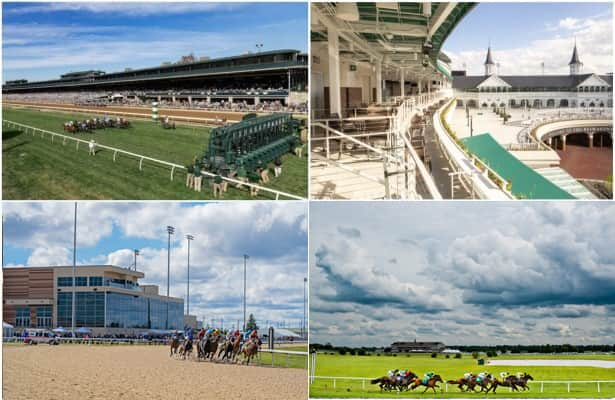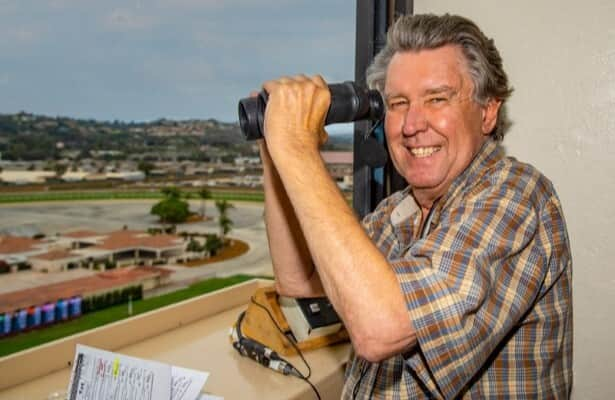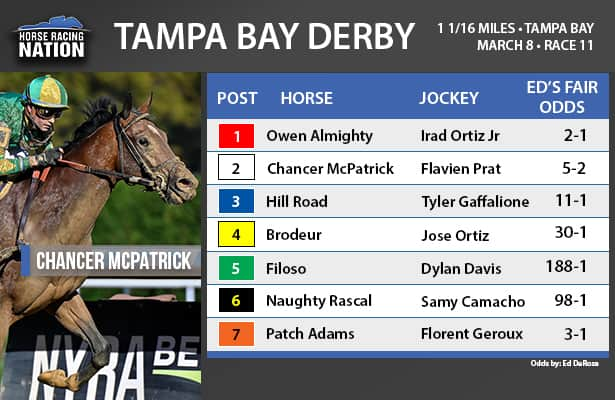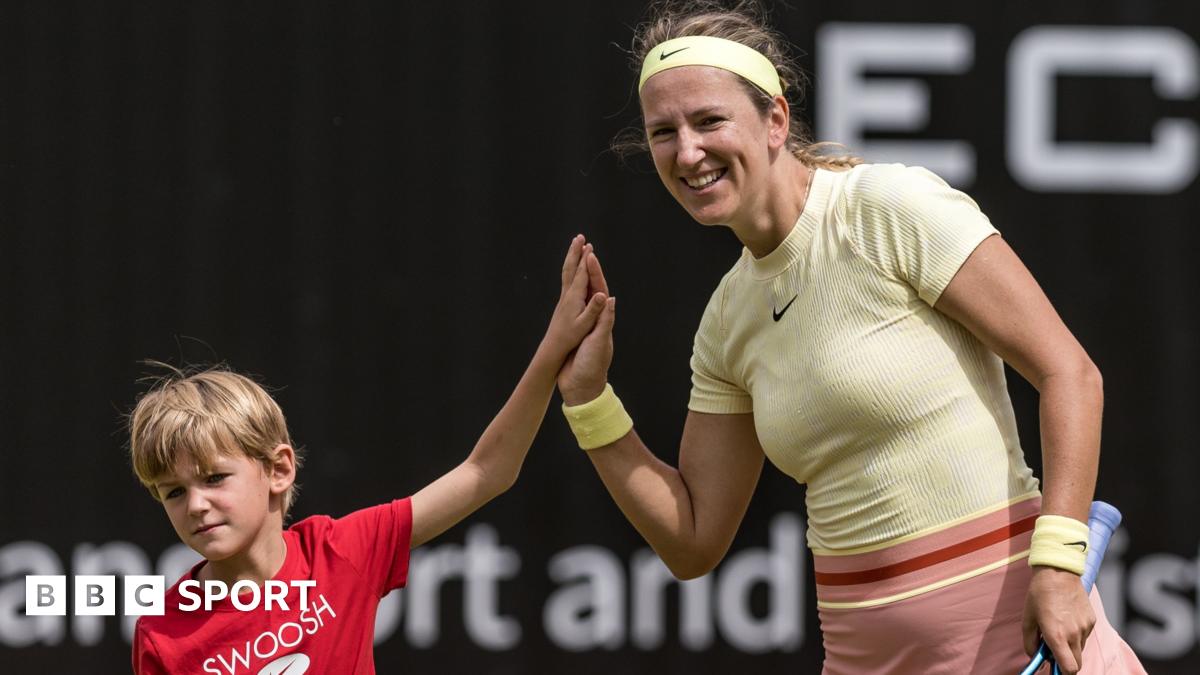Ky. handle explodes as gaming funds fuel marketing efforts

The horse capital of the world was never the handle capital of America.
Kentucky still isn’t, but to quote former Turfway Park announcer Mike Battaglia, it’s “gaining ground.”
From 2007 to 2023, Kentucky ranked last among the big four states in American Thoroughbred racing by total handle. That changed in a big way last year when Kentucky passed not only California in total handle but also Florida to rank second overall behind New York.
Of course, this was not an overnight change. Kentucky is the only one of the big four that handled less than $1 billion in a calendar year this century, and it happened seven times in the eight-year stretch 2010-2017.
From a low of $890,338,434 in 2014 to last year’s record of $1,769,565,470, a lot has changed. That 2014 total was so low that Kentucky’s handle was closer to Louisiana and Pennsylvania in fifth and sixth places, respectively, than it was to Florida in third.
The biggest change, of course, is the advent of historical horse racing machines, first as an executive order and then as a law in February 2021. Penny breakage followed the next year.
The combination of adding both a revenue stream for the industry’s stakeholders as well as a bettor-friendly initiative is a big reason that horseplayers have gravitated toward the commonwealth.
Following the 2020 Covid year, in which Kentucky handled $1,000,921,104, handle was up 29.3 percent to 2021 and 16.7 percent in 2022 before flattening somewhat with a 6.3 percent gain in 2023 and 10.1 percent in 2024. That is a 98.7 percent increase from that low of 2014. In that same time, New York is down 3.3 percent, Florida up 6.8 percent and California down 28.8 percent.
“With the passage of the historical horse racing bill in 2021, I had confidence that we’d have the best year-round circuit in North America,” said Damon Thayer, Kentucky’s senate majority leader at the time who served his last term in the legislature last year. “I’m pleased to see that prediction coming to fruition. The model here is something other states could learn from. The bill has guardrails in place to ensure protections for purses and horses.”
Kentucky racing statistics, 2014-24
| Year | Handle | Races | Purses | Starts | Avg. field |
|---|---|---|---|---|---|
| 2014 | $890,338,434 | 1,779 | $68,687,600 | 14,482 | 8.14 |
| 2015 | $1,047,085,624 | 1,823 | $99,935,300 | 15,542 | 8.53 |
| 2016 | $964,363,904 | 1,922 | $78,382,900 | 16,520 | 8.6 |
| 2017 | $979,465,210 | 1,874 | $80,847,800 | 15,688 | 8.37 |
| 2018 | $1,213,443,890 | 1,794 | $115,229,200 | 15,282 | 8.52 |
| 2019 | $1,146,248,270 | 1,766 | $113,120,100 | 15,435 | 8.74 |
| 2020 | $1,161,409,772 | 1,570 | $121,226,000 | 13,872 | 8.84 |
| 2021 | $1,293,714,022 | 1,739 | $133,724,700 | 14,675 | 8.44 |
| 2022 | $1,699,470,937 | 1,813 | $202,575,000 | 15,913 | 8.78 |
| 2023 | $1,606,525,859 | 1,885 | $191,383,500 | 16,703 | 8.86 |
| 2024 | $1,769,565,470 | 2,006 | $218,834,400 | 17,921 | 8.93 |
“Synchronicity is what we have in Kentucky,” Thayer concluded.
That synchronicity extends beyond the legislature to the boots on the ground at racetracks, stables, breed organizations, horsemen groups and anywhere in between.
“All of Kentucky’s stakeholders, from the tracks to the horsemen organizations to the legislative officials, have worked tirelessly to make Kentucky a year-round racing destination,” Churchill Downs vice president of racing Gary Palmisano Jr. said. “As a result, the wagering product has significantly improved and horseplayers have certainly taken note.”
“There is no single entity that controls everything,” said Chauncey Morris, executive director of Kentucky Thoroughbred Association, which helps administer the Kentucky Thoroughbred Development Fund. “Great governance means great accountability, and the tracks, horsemen and government are each accountable to each other.
“Kentucky is a hyper-competitive environment,” he said. “We’re the headquarters of the breeding industry and Churchill Downs (Inc.), we have the top horsemen and women in the country, but all these facets work well together. The people here want to be the best, and yeah, there’s competition, but we’re all working together to make this the best place to breed and race.”
There is certainly plenty of competition at the entry box. Average field size was 8.1 in that low-water-mark 2014 season and hit a record 8.8 in 2023 before increasing again to 8.9 last year.
“You put full fields out there and promote the product, and people respond,” said Jim Goodman, a former state employee who is now the director of simulcast operations for Keeneland Association. “We’re thrilled that other tracks in Kentucky are doing well. It definitely helps Keeneland, which has both racing and sales. The way the (historical horse racing) money is divided is good for everyone. Every stakeholder realizes how important each other is to the business and to the state. When we do well, people around us do well.”
Kentucky is doing so well that some have questions about whether it is doing too well. Although pari-mutuel handle is not quite a zero-sum game, there is only so much money in circulation for wagering.
“Kentucky is unique in that everybody knows how important Thoroughbred racing is to this state, and I’m talking everybody, the government, the tracks, etc.,” Goodman said. “The closest environment I can think to Kentucky in this regard is Arkansas with Oaklawn. That full support means a lot, but you do have to wonder if it’s coming at the expense of other states. Our product is just the best right now, and it’s only getting better.”
Thayer has not been shy in social media or speaking for this article that Kentucky will never be in the business of helping other states other than breeding the best horses to race anywhere.
“It would be illegal to use this money in any other state,” Thayer said. “You look around at what’s happening in California and Florida, and you just scratch your head. I’m tired of people saying, ‘Things are going too good in Kentucky, it should share its largesse.’ Then you see these self-inflicted wounds elsewhere and the mind boggles. You can learn from what we’ve done and apply it elsewhere, but you can’t take from us.”
As for the money available in Kentucky, the KTDF is funded in part by historical horse racing and provides incentives for breeders and owners as well as money for racetracks to market their product and improve public relations.
For the fiscal year ended July 31, 2024, Kentucky racetracks and their satellite facilities handled $9.6 billion on historical horse racing with a gross win of $872.4 million and $55.5 million of that going to the Thoroughbred fund.
“The KTDF advisory committee allows racetracks to use money to target horseplayers,” Morris said. “All of the stakeholders, including the KTDF advisory committee, are cognizant that maximizing Kentucky’s product means increasing handle. That’s a process. Let’s make everyday racing the best we can and keep horses in Kentucky and make this the best product to bet. This isn’t just about purses for horsemen or money for tracks. We’re spending this money strategically, thoughtfully and deliberately, and that has contributed to handle gains.”
Related
Maryland OTBs push for historical horse racing machines * The…
[embed]https://www.youtube.com/watch?v=pvaWzMeZLFI[/embed]Frank VespeMarch 6, 2025A coalition of Maryland off-track wagering facilities on Wednesday urged lawm
Denman retires as Del Mar announcer; Collmus takes the mic
Iconic race caller Trevor Denman announced his retirement after 40 years on the job at Del Mar. Denman will be succeeded at the seaside track by veteran track
Legendary Horse Racing Announcer Confirms Retirement After 40 Years
It was the year 1971. Trevor Denman had just started out calling the races in his native country, South Africa. More than a decade later, Denman got on the Del
Fair odds: Small but ‘Almighty’ field in Kentucky Derby prep
Owen Almighty was so lowly regarded after his runner-up finish to John Hancock in the Sam F. Davis Stakes four weeks ago at Tampa Bay Downs that he did not eve











